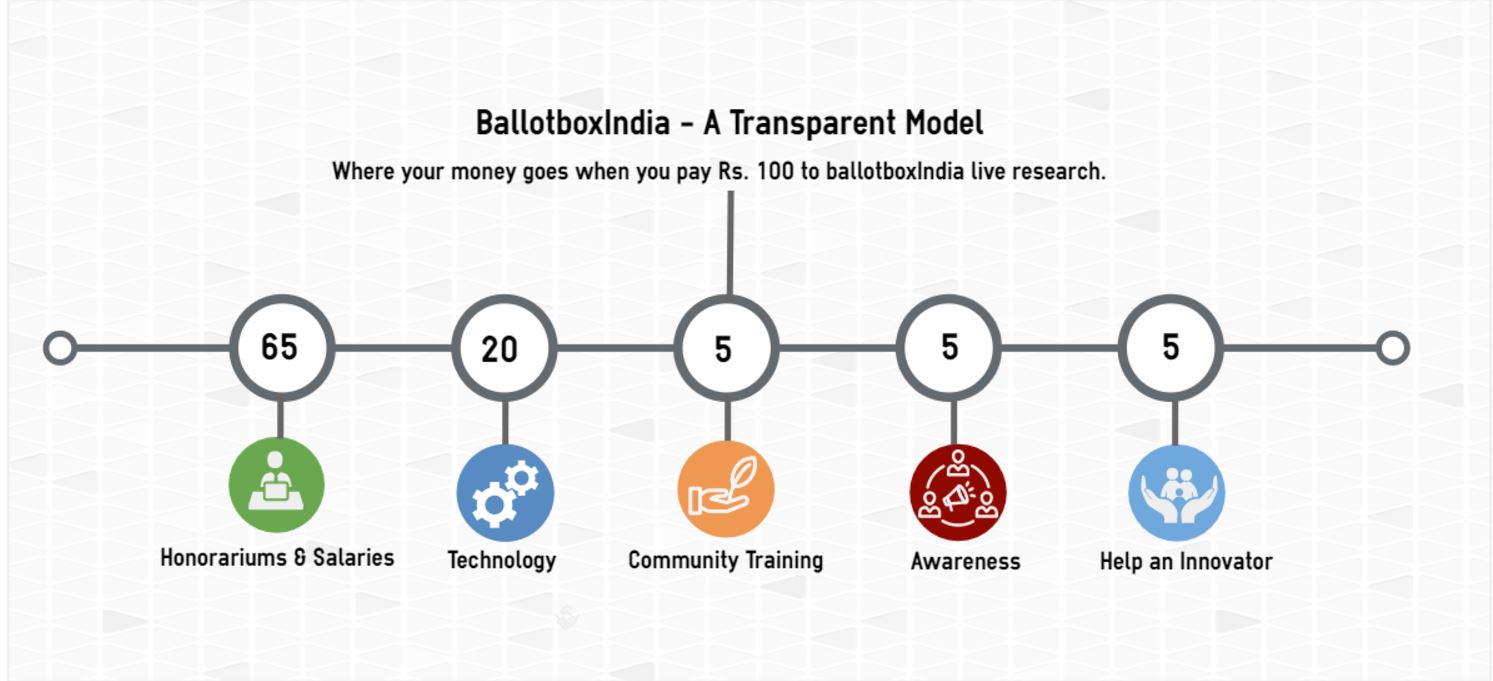Gomti River Front Development (Lucknow) - Impact on sustainability, community, history, economy, and relevant interventions
Traveling to various parts of the world, and living in New York city with high population density for close to 10 years, especially along the Hudson river, we have grasped first hand how drainage systems and water bodies co-exist with man-made developments; specifically - how river banks are managed in a first world country.
So as part of our analysis on river fronts and related developments in India, our team visited Lucknow in March 2016 to get a firsthand exposure on Gomti riverfront development. We talked to various experts on river ecology, hydrology and civil engineering, and also met some of the project team members on site.
What we saw and the research on the matter via RTIs, documents, interviews we received- were indicating towards a major loss to the river ecology along with an imminent danger to a vast population living and dependent on this river system.
Below are our observations on the issues:
· Gomti river lost 2/3 of its water due to mismanagement of its catchment areas and its 22 tributaries during previous decades. It is a hugely polluted and alarmingly shrinking river.
· It’s a huge river running for 940 km and is a rain/groundwater fed perennial alluvial river with sluggish flow throughout the year with many fold increase in runoff during monsoon.
· Gomti along its banks has supported a tremendously diverse set of flora and fauna and a huge part of historical river landscape and culture.
· All these years, rainfall has not decreased and followed a pattern of rains between 800-1100 mm (MET’s data) of rains on Gomti catchments.
· Gomti river when flooded - most recently in 2008, rises up by 10-12 meters along various observation points, breaching the flood embankments along the river of widths between 250 – 450 Meters.
· When river floods, it pushes back on the natural drainages (16 Nalas) which have HFL (high flood level) higher than river so water pumping is needed.
· Population of 10s of million depends a lot on this river for aquifer recharges to maintain any sustainable quantity of ground and fresh water.
The river’s natural flow started receding sometime during 1970s due to mainly three reasons:
1. Pollution, especially from 40 natural drains from the city which were mixed with city sewerage, industrial discharge and solid waste in Lucknow and many other cities along the flow, adding to the silt, pollution and alarming decrease in dissolved oxygen.
2. Encroachment and pollution of river flood plains, drainages and channels owing to haphazard urbanization.
3. Since the river rises by 10-12 meters during monsoon, high embankments were built to save habitation from deluge along with gomti barrage to control the water flow.
The IIT Roorkee report (for LDA – 2013) highlights that due to incessant silting the river bed level has gone up by 1.5m. Encroachment on her catchment areas played a big part in decreasing the flow leading to its silt degrading capacity.
2. Time to time dredging of the river done.
3. No definitive figure of spending on such projects in public domain.
Many efforts went under Gomti Action Plan, leading to plans for Gomti riverfront development in 2012.
There was a study done by IIT Roorkee on the feasibility of Riverfront development in May 2013 for Lucknow Development Authority, which has salient observations as below: IITR 2013 Report Available on request :
Ø The study was done to gauge impact of an expected river front between Gomti Barrage and 6.8 km upstream. Its scope was limited to measure changes in high flood levels (HFL), impact on existing drains and bridges in case of floods similar to 1960 and 2008.
Ø The study was based on the impact of land reclamation for building a riverfront- maintaining the width of river to a constant 250 meters which include increasing and decreasing the width of river at various points along the 6.8 km length.
Ø It was noticed river’s HFL will increase by 1.25 meters than 1960 level of 112.6, same can be assumed against 2008 level of 108.6 m.
Ø Current embankments should be raised by 1.5 meters to achieve the required Free board.
Ø Water velocity will increase by 20%, bed shear stress will increase by 30%.
Ø Two bridges railways and harding bridge were found to be unsafe from the scour consideration.
Ø Safety related study for Hanuman Setu was not undertaken due to unavailability of its General Arrangement drawings.
Ø A width of 200 meters should be left mobile for facilitation of bed aggradations & degradation. i.e. no construction.
Ø While it is proposed to reclaim some land it is also proposed to give back some to the river to facilitate flood water without any obstruction.
The study didn’t cover or any other study undertaken (available to public) to explain below points-
Ø Role of river front on bringing down pollution in Gomti, and increasing the water flow.
Ø Whether River front is the best way technically and economically vs alternate ways like separating rain and sewerage at the first place and removing encroachments and management of the river’s catchment areas, drains and channels.
Ø Should smaller decentralized STPs be built instead of mega STPs which have failed historically.
Ø Any effect of river front on biodiversity on the stretch such as turtles depending on the river system of stream and sand. Due to diaphragm wall on both sides, sand banks are lost and so are the breeding grounds for turtles.
Ø Effects on cultural heritages like Monkey Bridge (now no more and valid reasons for its demolition should be produced) and more than 20 historically important Ghats.
Ø Definition of river front which may include commercial development and promenades and its comparison with natural swamps, forests, living shorelines, hiking trails.
Ø Current approach vs keeping the shores mobile and act as natural barriers against floods and soil erosion.
Ø The 23 Nalas are actually natural rainwater drainage systems of the city, acting like arteries of the river pumping surplus water. Impact on in-land flooding due to any blockage on these natural systems.
Ø In case of a man made cemented barrier built, these natural systems would be blocked and would need to be channeled - Do we have such a mega-nala to channel them to the STP for cleaning under flood conditions?
All these natural drains getting either concretized or piped to carry city sewage, how do we plan to feed the river and Ground water table, with Rain water catchment?
Ø Is tax payer getting maximum return from his tax money with community getting the best solution possible?
With such a cost as described by IIT Roorkee report (2013), a reasonable approach would be to rethink, do a complete study of pros and cons, alternate methods and intervene with utmost care. But…
Situation as of June 2016.
Ø The river front is now being developed under irrigation department with 16-meter-deep diaphragm wall - building a river channel with width of only around 150 meters or less.
Ø The length of riverfront is more than 12 kms now and expanding as per news reports.
Ø The IIT Roorkee report (2013) has clear recommendation for keeping 250 m minimum width for the river from chainage 0 to 6800 m.
Ø Jacketing the river will have a drastic impact over the Velocity and corresponding design calculations.
Ø The development is now ranging 12 Km from Pukka Pul till Shaheed Path, instead of the study on 6.8 km.
Ø The development includes paved, concretized structures right after the river channel of 150 m of less.
Ø Cement, concrete, heavy machinery has already claimed and irreversibly damaged the riverbed and ecology.
Ø As per news report and presentation videos- river front includes fancy lighting, massive structures like London Eye, parking lots, commercial establishments etc.
Ø A parallel drain is being built to catch all the nalas and send to the STP. As per experts It would be immensely difficult to achieve the required slope in this kind of layout. How is it different than earlier failed experiment with STP at Bharwara? What is the cost profile, pollution profile of operating such an immense infrastructure?
Ø Plan to use Sharda canal’s water to feed into the river to maintain the flow in the stretch.
Ø A rubber dam built upstream to create an enclosed channel between the Gomti barrage and rubber dam.
We analyzed above points and started contacting people and applications requesting information.
Ø News reports came in December 2015 that another MOU is signed between Irrigation department and IIT Roorkee for proposed riverfront development.
Ø RTI response from IIT Roorkee confirmed (May 2016) no such report is submitted yet to the agency.
Ø RTI was filed with Lucknow Development Authority, chief town planner transferred it to Executive Engineer Trans-Gomti (4 Months since filing).
Ø RTI with Irrigation department asking for DPR, Environment assessment and details on the project is pending.
Interventions we are aiming to achieve.
Ø Detailed project report and Environment impact study on current plan of the project should be made available in public domain for close scrutiny by independent experts.
Ø Comparative study should be done against more holistic methods to rejuvenate the river.
| Holistic methods |
Current River Front |
|
1. Separating natural drainage systems from sewerage system of the city 2. Minimal interference with ecology and development of natural swamps and living shorelines while maintaining biodiversity. 3. Decentralized STP system, with proper monitoring, providing redundancy and failovers. 4. Closely managing catchment areas along river’s length. 5. Preserving culture, heritage, biodiversity for generations to come, similar to developed world. Children in developed world learn to co-exist with nature in its raw form, adds to another dimension in human capital growth. A natural trail is preferred over any paved artificial jogging track. | 1. Current tremendously expensive river front project which is disastrously interfering with natural and cultural systems. 2. Upcoming River linking project and related environment and economic consequences. 3. Consequences of rubber dam project. 4. Huge environment effects on running such infrastructure (energy and pollution profile). 5. Risk attached with failures and environmental/disastermanagement compliance. 6. Replacing our culture, heritage, biodiversity, river’s ecology with bland, concretized structures. Effects on psyche of our generations to come. Children loosing connect with nature. 7. Socio-Economic loss to people in the neighborhood. |
Ø The current plan as on ground deviates a lot from earlier study done by IIT Roorkee for LDA (2013), an urgent study should be done and made public.
Ø List the agencies responsible for design decisions on each part of current development and their cost profiles. E.g. of one such decision with huge cost profile is - Artificial dredging going on river bed to deepen it and compensate for width loss. Rivers are living systems and with increased velocity and high silt will fill up the artificially dredged riverbed soon (similar to liposuction on human bodies).
Ø World over (developed world in particular) river fronts are developed “on shore” slowly over decades with a neighborhood development approach, constantly monitoring the impacts, and without altering with natural river flow. Why an active flood plain and river bed of Gomti altered and encroached with in such a hurry.
Ø What about bio-diversity, flora and fauna in its natural form, any study done?
Ø Why the construction is done without the environment impact study completed by IITR as mandated in MOU.
Massive interference with a river’s ecology is a matter of grave concern, not just from a long term sustainability point of view but huge loss to culture, biodiversity and economic loss to the exchequer. This massive river is a major part of Ganga basin and impacts millions.
We are a group working on getting a more sustainable solution to Gomti River's problems. Join hands to make an impact.
Parallels between Sabarmati and Gomti Riverfronts.
Sabarmati riverfront also drew massive flack and resistance from a plethora of experts, environmentalists, social scientists.
The expensive development also involved building dams, channels followed by river linking with the Narmada. Sabarmati riverfront is widely covered over media (one here and plenty more, just look around) by experts for its negative impact on the river system, impact on people and culture, may experts claim that Sabarmati river is now mostly Narmada river, essentially losing the original river.
The river is made sure to have water in the riverfront part to keep the shine on, but up and downstream systems, general health of the river are deteriorating and are a major concern. We haven't found a single expert who agrees with Sabarmati Riverfront, which is the same as Gomti Riverfront.
But yes there is a perception among political class over this "Selfie" model of development that it can win elections, and it also looks true, as per the same ABP report which attributed the success perception of Gomti Riverfront project on crowd of people taking "Selfie" in front of it, and that has been the driving force behind the development.
This issue shouldn't be seen in isolation, Sabarmati model has given legitimacy to Gomti, Varuna, Hindon and much more such river front development projects. Things are now spawning out of control and moving to lakes and ponds citing a similar model created in Ahmedabad around Kankaria Lake.
India which has already started to see seasons of major droughts and deluges during most part of the year is sitting on a major water catastrophe and due to these patchwork sitting on huge demand side inflation of energy and infra which are ballooning sustainability costs and would be a major concern if India tries to implement promises made during COP21. Especially if this kind of development models become the norm and are seen as a mode of political warfare.
India instead of working on it, is given massive bread and circuses". With our population and strained natural resources, it would be really tough to rebound.
Update - Summary of actions taken as on September 2016.
1. Lucknow Development Authority, IIT Roorkee, and Irrigation departments notified. - Lucknow development authority transferred request to Irrigation department, IIT Roorkee responded with no report is yet provided to Irrigation department.
2. Environment Ministry is been notified - Request is transferred (on September-09-2016) to National Clean Ganga Mission since Gomti falls under their jurisdiction. - A response is awaited from NCGM.
3. Indian consulate in New York is notified for help - Request is transferred to appropriate ministries and Resident Commissioner of Uttar Pradesh in Delhi ( August -17 - 2016) - A response is awaited from the resident commissioner.
4. National River Conservation Directorate (NRCD) notified of the issue - Request is transferred to National Clean Ganga Mission ( August-30-3016)
5. Prime minister office is notified - Request is received and PMO looking at it (last updated August-29-2016).-
Update - The matter is forwarded to Secretary, Minister of Resources, River Development and Ganga Rejuvenation, GOI, New Delhi India vide Registration No. PMOPG/D/2017/0332445 dated 13/07/2017.
6. NITI Ayog is been notified - Request is now been looked at by Adviser Water Resources (August - 08 - 2016).
Meanwhile, ABP News a major news channel in India created a report on Gomti Riverfront confirming the public expenditure figures and documenting evidence on the paved riverbed and massive construction happening. The report was presented from the point of view of upcoming very high profile Uttar Pradesh elections in 2017, the rivalry between Chief minister of Uttar Pradesh and between Prime Minister and the race to cut the ribbon before the elections.
The report also indicated that a similar project by the current Prime minister (when he was C.M. of Gujarat) on Sabarmati river in Ahmedabad Gujarat was a great boost for him in elections, so current CM of Uttar Pradesh is trying to simulate the same in a hurry.
The report also misquoted experts who were "warning on camera about the project" and quickly glossed over to score political brawny points for U.P. C.M. who on camera talked about how they are restricting the river under a channel.
We have filed a formal grievance with the channel on the misquote and political tone which is dwarfing any environmental or sustainability concerns.
Update (December-05-2016)- After more than 6 months and plenty of efforts Irrigation Department returned the RTI citing Intellectual Property related clauses. We fail to understand how disclosing environment impact study related information will break any intellectual property laws and rights, and can't the public part of the information can be provided. If this information can't be given, then what's the point of Right to Information? The conquest for information continues...
Update April 1, 2017 - High-level probe was ordered by the newly elected chief minister of Uttar Pradesh Mr. Yogi Adityanath which included Justice Alok Kumar Singh, Dr. U.K. Choudhary, Prof. A.K. Garg to probe on the financial and environmental irregularity on the riverfront development project.
Update May 8, 2017 - BallotboxIndia representative Mr. Rakesh Prasad met with the probe panel and submitted the RTI response where Irrigation Department had no environment clearance or impact assessment completed until April 2016 while work was done till an advanced stage. Justice Alok Kumar Singh listened with great patience about environmental damages, no clearances received and Consent manufacturing by channels like ABP news. He praised the efforts, took the RTI copy, assured us that they have done a very thorough research with a senior environmental scientist in the panel. The issue of ABP News or similar campaigns run to consent manufacturer is out of scope and this is not the right platform. Mr. Ambuj Dviwedi (Chief Engineer Irrigation Department) was there and was assuring to see the competency on board.
Honorable Justice Singh praised the efforts, saying if young people start taking cognizance of such issues things will turn for better in India. The issue of ABP News or similar campaigns run to consent manufacturer we believe is in scope and should be investigated since there might be public money involved in some shape and form, but the problem panel was very tight on the deadline of just 45 days so pressing it in this forum was not right, but we will keep raising this issue of ABP News or similars on relevant platform and it would be a marquee case of such practices.
Mr. Ambuj Dviwedi (Chief Engineer Irrigation Department) a young technocrat was there and was very assuring to see the competency on board.
Update July 21, 2017 - A CBI Probe is now ordered on the Gomti Riverfront Development Project, fingers crossed. There is no going back with the river but hope this builds a precedence.
Regards,
Rakesh Prasad
coordinator at ballotboxIndia.com
 tag on profile.
tag on profile.




